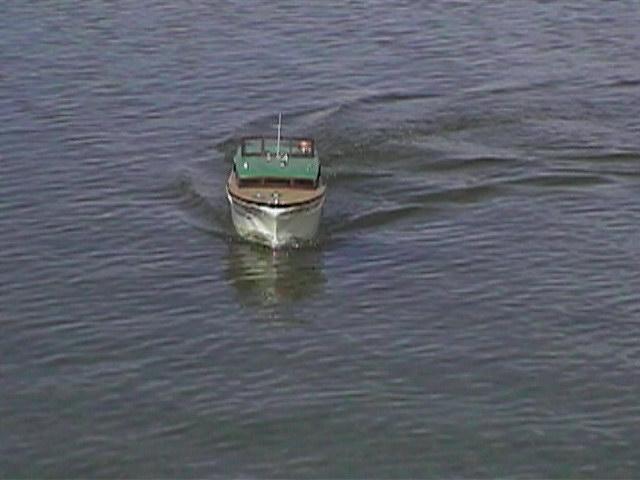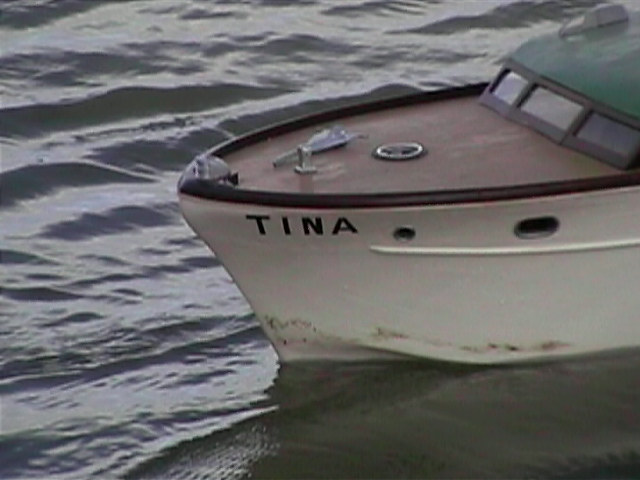



Boats page 2
I finally finished building the boat during the early 1980's and installed a Futaba 7-channel radio inside. I also adapted the drive system to include 3 electric motors instead of the one that was provided in the kit. In addition, I secured a horn from a semi-trailer truck at a junk yard and installed it under the front deck of the boat, where there was sufficient room. I then purchased three war-surplus 2-volt lead-acid batteries from a salvage store in Minneapolis and placed them in the rear of the boat where they balanced the weight of the horn nicely. I rigged up three servos to operate rotary multi-position switches so that I could feed 2, 4, or 6 volts to each of the motors independently. My idea was to control its direction entirely by varying the speed of the starboard and port motors. I finally tested the unit one day at a local pond. And it worked but to my dismay, the semi horn failed to emit even the slightest sound and the switches I used were not durable enough to stand the current passing through them and after a short time, the contacts burned to the point where they stopped conducting electricity and I had to put the boat away until I could re-wire it in an alternative fashion. That's where it remained until the spring of 2002.
At that time, I secured three mechanical speed control devices from an Internet store which specializes in electric model supplies and re-wired the electrical components in the boat. I also replaced the lead-acid batteries with Nickel-Metal-hydride 'D' cells and added a fourth servo to turn the twin rudders. On a trip to Lake Powell in May, I took the boat and sailed it successfully, testing it out to approximately 100 yards and found that it performed flawlessly, although I discovered that it turned much more easily with the rudder than varying the speed of the outside motors. A video clip is on page 3
 |
 |
 |
 |